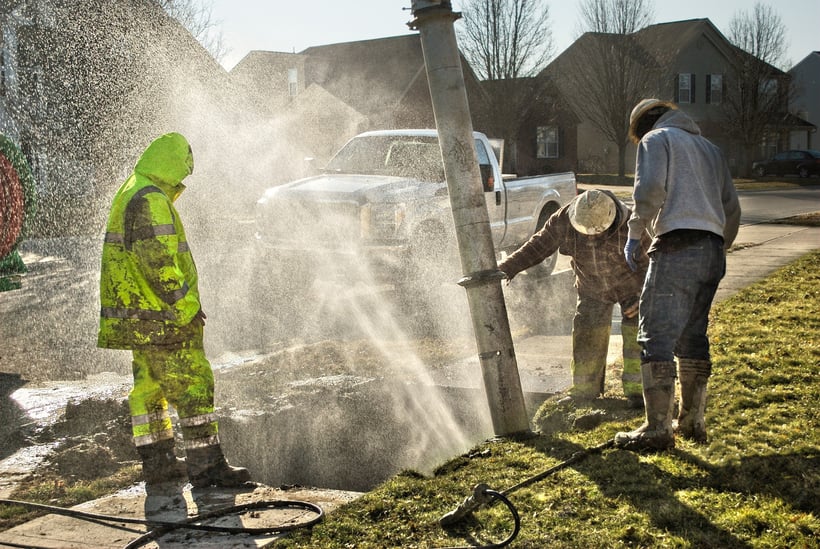
Regulation is a part of every industry, but few so much as construction. At the state level, there are building codes, insurance requirements, union and wage requirements, safety regulations, audits, and so much more. At the federal level, construction compliance becomes even more difficult.
The Office of Federal Contract Compliance (OFCCP) conducts audits on federal construction projects, and in 2017 alone, they collected more than $23 million from those who did not meet regulations. Federal contractors may also face fines from OSHA (Occupational Safety and Health Administration) and the EPA.
While this poses many construction compliance challenges, there are solutions for making them less daunting.
Biggest Construction Compliance Challenges
There are many regulations with which it is crucial to comply. One of the best ways to manage it is to hire a compliance manager, or maybe several. Whether you do or not, the following are some of the biggest challenges your construction company is facing (or will face) and the solutions to these issues.
Paperwork & Lack of Technology Adaptation

There is a wealth of technology solutions for construction companies for safety and environmental compliance, paperwork centralization, real-time management, and so much more. Yet, these critical pieces of technology aren’t implemented. Many contractors retain the old ways of files and actual paperwork, which is already a hazard in the case of fire or flooding. They’re easy to lose, easy to misfile, and challenging to manage when there are many worksites and hundreds of employees.
The reason this is a compliance challenge is due to audits. As mentioned, $23 million was collected from failed inspections, and much of that is due to archaic data collection and filing. During a desk audit, all employee-related paperwork must be passed over. If it is lost or in multiple locations, you are likely to end up with fines for your shortcomings.
Solution:
There are many job-site compliance tracking, document management, and construction safety inspection software solutions available to help you centralize and streamline all of your paperwork, as well as ensure you are following regulations. These software solutions can also keep track of all the construction industry regulations that apply to you, provide real-time monitoring, and often make suggestions for faster processes and continued compliance.
Waters Of The United States (WOTUS)

Waters of the United States is a federal regulation that, from an outward appearance, helps to keep public waters clean and safe for the public and environment. However, some of the provisions create construction challenges and often cause costly delays.
For example, there are ditches near many roadside construction projects. If those ditches fill with water due to the project, they become subject to regulation, as they are now classified as “waters of the United States.” In this case, you may need the Army Corps of Engineers to decide whether or not you are obligated to clean it.
Solution:
There is currently a suspension on this rule, and the current administration is trying to throw it out for good. In addition, you may also make a public comment to the EPA and USACE.
Safety Regulations & Penalties

OSHA has changed existing standards to add more layers of compliance, in addition to increasing its fines. Their inspection model has shifted to focus more on quality, rather than setting several inspections that have to be completed by each instructor. The unit they now use to measure compliance is the “enforcement unit,” and weight on a nine-point scale.
What this means for you is a more rigorous inspection process, and more time spent on the inspection. Because of this, inspectors are more likely to catch compliance issues.
Chemical safety regulations are also changing with the adoption of the GHS (Globally Harmonized System) from OSHA, which specifies the classification and labeling of hazardous materials, as well as safety data sheets and training for employees. It was implemented in 2012 and gave four years for adjustment; however, it can be easy to neglect. Beware, fines have increased by 80%, and continue to rise each year with inflation.
Solution:
Technology is just as much of an aid here as it is with paperwork. EHS (environmental, health, and safety) software help with workplace safety, compliance, construction risk management, SDS library management, employee documentation centralization, deadline tracking, corrective action suggestions, employee training, identification of weak areas and risks, and much more.
Respiratory Protection

In 2018, OSHA began enforcing its 2016 proposal for the tightening of allowable exposure to crystalline silica dust. There were a flurry of lawsuits shortly after, with the defense that maintained respirators are counterproductive and even dangerous in high-heat areas where the risk of heat exhaustion is high. Also, it is difficult to assess the level of toxicity of these locations, considering that few labs test toxicity, resulting in delayed results.
This, along with other respiratory regulation non-compliances, is listed on OSHA’s top 10 list of violations. In regards to these regulations, OSHA states that “In the control of those occupational diseases caused by breathing air contaminated with harmful dust, fogs, fumes, mists, gases, smokes, sprays, or vapors, the primary objective shall be to prevent atmospheric contamination.”
They have outlined methods of control, such as operational confinement, ventilation, and respirators for all employees.
Solutions:
There aren’t too many ways to get around this, however, some in the industry now speaking with OSHA on ways to implement this regulation. The most common suggestion besides following the law is to institute training to help remain compliant.
Construction Compliance, Planning, & Risk Management Resources

There are many risks in construction projects for top construction companies, and those just building a small construction company business plan. Technology and software can make it easier to mitigate those risks and help you to remain regulation compliant.
Cover Glass USA, a leading provider of glass doors and windows, has partnered with CAD Details, which offers free resources to architects. Get your free download of CAD Details documents from Cover Glass USA. Or, Check out our recent gallery to see unique construction projects that bring indoor/outdoor spaces to life. If you like what you see, reach out to get a free custom quote for your next project.


